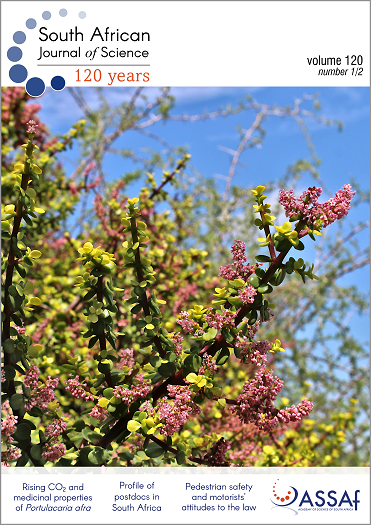Defluoridation of water through the application of carbonised bone as a green adsorbent: A review
DOI:
https://doi.org/10.17159/sajs.2024/12879Abstract
Flouride contamination of water is recognised as a serious challenge facing humanity. Consumption of water that contains excessive amounts of fluoride can result in fluorosis. Consequently, concerted efforts have been made to develop cheap, effective and green techniques/materials to remove fluoride from water, particularly potable water. Bone char prepared from bovine, swine, and equine bones has been used extensively in this regard, and is the most promising, cheap and green material for treating drinking water with high fluoride concentration, particularly in developing countries. However, research on bone char prepared from bones of animals in the wild, as well as those from domestic and semi-wild animals treated with antibiotics to enhance growth, has been scanty. Such research is important as the use of antibiotics may alter the composition of bones, and thus their potential as a green adsorbent to remove fluoride may be impaired. Furthermore, little attempt has been made so far to package char bones for easy application domestically, particularly in rural communities.
Significance:
- Contamination of water by fluoride is a major problem globally.
- Various techniques and materials have been employed for water defluoridation, including the use of bone char, which has several advantages.
- Bone char prepared from bones of animals in the wild and those from domestic and semi-wild animals treated with antibiotics to enhance growth should be further investigated.
- Cheaper and less elaborate processes and packaging are required to scale down the use of bone char at domestic level.
Downloads
Published
Issue
Section
License

All articles are published under a Creative Commons Attribution 4.0 International Licence
Copyright is retained by the authors. Readers are welcome to reproduce, share and adapt the content without permission provided the source is attributed.
Disclaimer: The publisher and editors accept no responsibility for statements made by the authors
How to Cite
- Abstract 485
- PDF 745
- EPUB 343
- XML 369
- Supplementary material 367













.png)